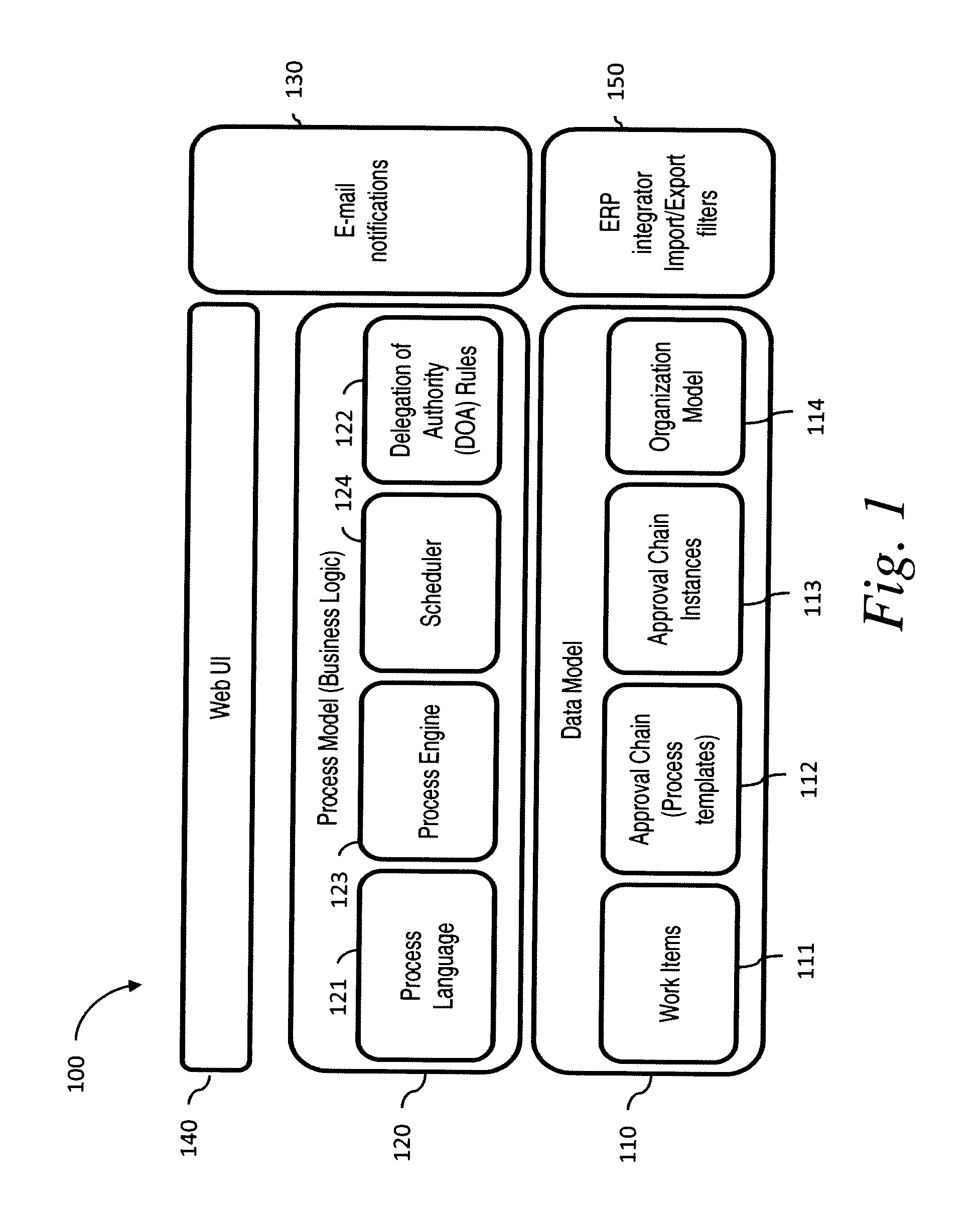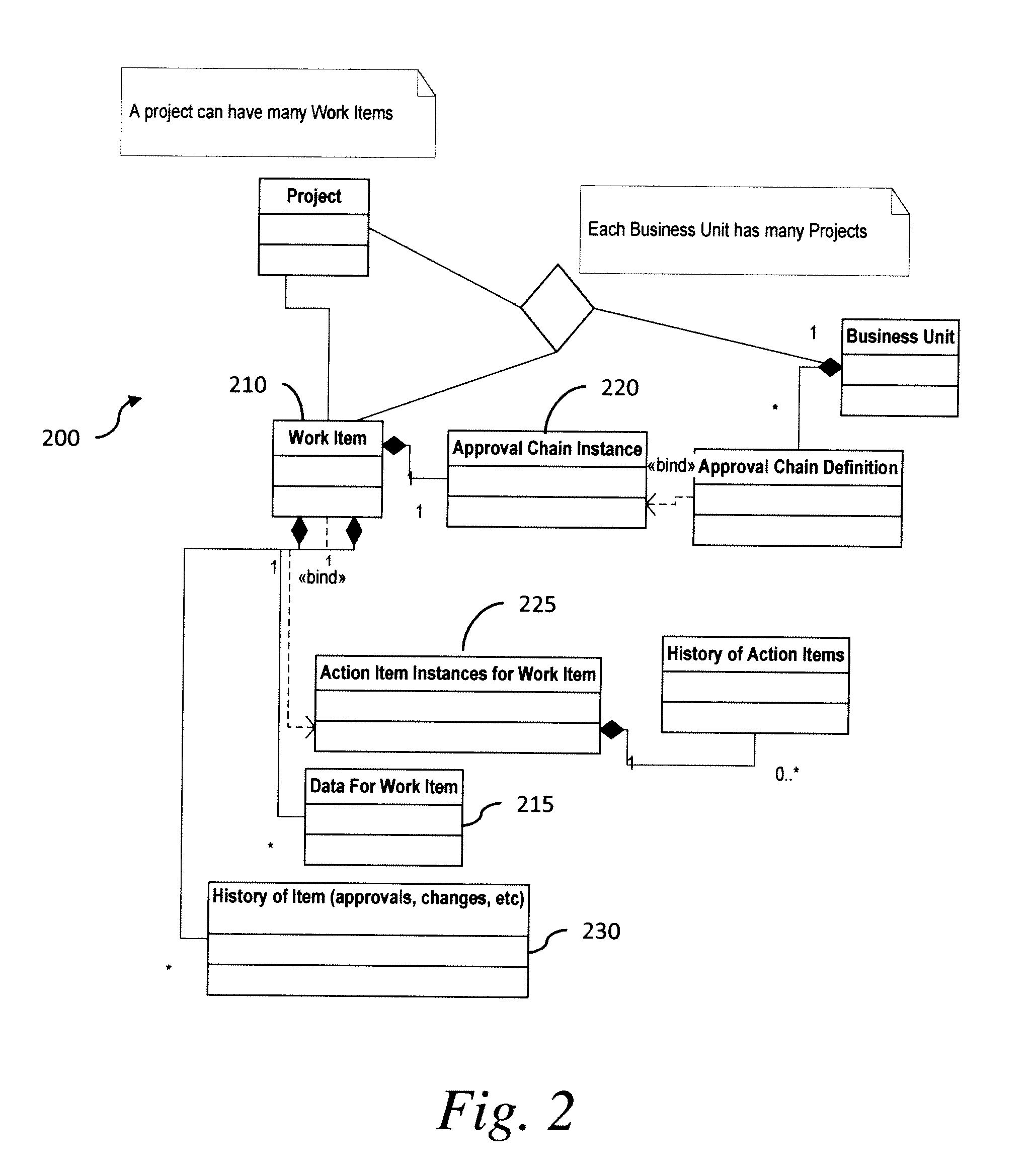Approach and tool blending ad-hoc and formal workflow models in support of different stakeholder needs
a formal and workflow technology, applied in the field of management workflow, can solve problems such as excessive process specification, inability to meet the needs of different stakeholder groups, and inability to implement the initial office process automation tools and approaches
- Summary
- Abstract
- Description
- Claims
- Application Information
AI Technical Summary
Benefits of technology
Problems solved by technology
Method used
Image
Examples
case 1
[0121] Tracking of Non-Conformance Costs: The tool was originally designed to track non-conformance costs. As illustrated by the system 800 of FIG. 8, non-conformance costs are entered at 810, follow a standard approval chain 820, 830, and generate monthly and quarterly reports 840 per project and for the enterprise on the non-conformance cost level, and are able to show an audit trail for the approval of their non-conformance costs (NCCs) using data mining 850 or other means.
[0122]An exemplary enterprise workflow 900 is shown in FIG. 9. Enterprises using this scenario may configure their workflows quite differently; the workflow 900 is a representative example.
[0123]The first level approver is an “NCC Reviewer”910. Also at the first level, the NCC initiator 920 is an optional listener, receiving notification email. That arrangement handles the case in which the person initiating the NCC is not the person who entered it into the tool. The initiator is informed that the item was ente...
case 2
[0127] Tracking of Projects: An enterprise may use multiple item types, not just non-conformance costs, and track its projects from order acceptance through completion within the presently described tool, reconciling on a regular basis with an enterprise resource planning system. That requires adding a project view especially for the enterprise, the addition of specific project tracking reports, along with key performance indicators calculation and reporting, and the ability to parse enterprise resource planning system reports for reconciliation. Administrators in an enterprise are able to enable or disable the project features as desired for their business unit needs.
[0128]Each enterprise may customize its workflow for its process; the following is a description of a representative use case.
[0129]In the example project tracking item 1000 shown in FIG. 10, the Level one approver 1010 must always be chosen, and is the project manager for the project to which the item is related. Befo...
case 3
[0136] Tracking Customer Concessions: A business unit or enterprise may not be interested in tracking all non-conforming costs, but just those that were concessions to the customer. Such tracking does not require any changes to the presently described tool; instead, it is possible to use the tool by simply configuring it for that case.
[0137]Because customer concessions vary widely in approval and notification requirements, an approval chain for a customer concession includes not only typical specific role assignments (such as project manager, business manager, financial officer) in various approval levels, but also the use of some generic roles where a large number of different people may be entered in the role. The generic roles are labeled “level one approvers,”“level two approvers,” etc. In that way, a very large number of approvers may be entered in the system, and an item can be sent to a wide variety of people based on what the item is related to.
[0138]All approvers are allowe...
PUM
 Login to View More
Login to View More Abstract
Description
Claims
Application Information
 Login to View More
Login to View More - R&D
- Intellectual Property
- Life Sciences
- Materials
- Tech Scout
- Unparalleled Data Quality
- Higher Quality Content
- 60% Fewer Hallucinations
Browse by: Latest US Patents, China's latest patents, Technical Efficacy Thesaurus, Application Domain, Technology Topic, Popular Technical Reports.
© 2025 PatSnap. All rights reserved.Legal|Privacy policy|Modern Slavery Act Transparency Statement|Sitemap|About US| Contact US: help@patsnap.com



